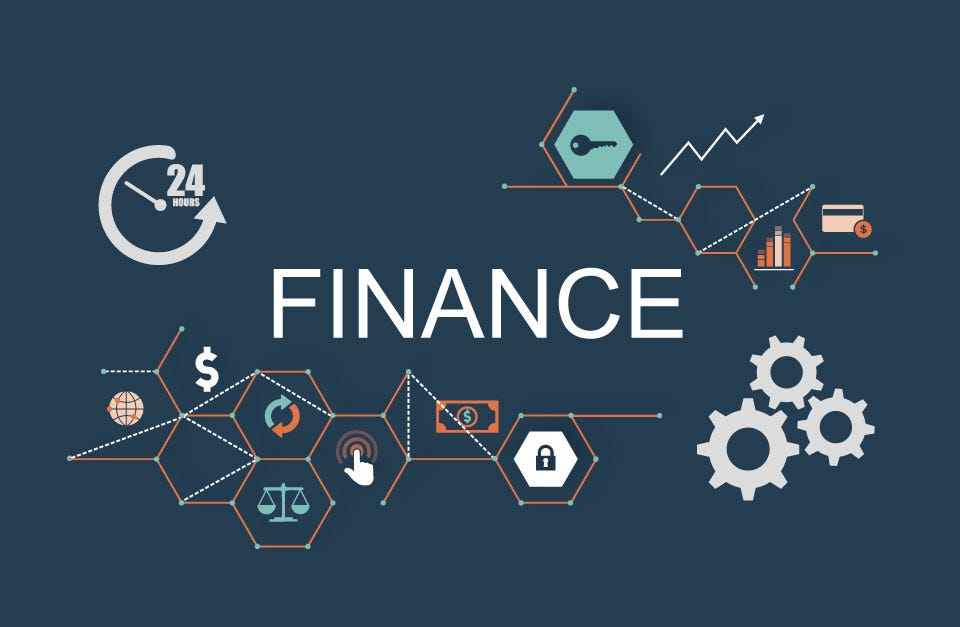
It has become evident that the financial sector is slowly relocating towards a technological horizon. She noted that there has been a lot of improvement in how annuity payments have been managed within the country. There has been advancement in technology, and integration of solutions to different problems, resulting in improvement in efficiency, increased accuracy, and satisfaction of the clients.
The primary aim of this article is to address the topic of using technologies for managing the payments of annuities mainly through explaining the different roles of technology in this area as well as giving more info about the arrangements of the same.
Annuities are some form of financial promotional products that facilitate the provision of periodic payments after certain agreed intervals, frequently used when planning for retirement. These payments are computed and established in such a manner that it requires recording and several other disbursements to be made at the appropriate time.
The process of credit scores has been enhanced through technology through the introduction of automation and methods of incrementing the accuracy and quality of the customer. Here, it is crucial to single out how technological advancements are revamping the annuity payment process.
Automation of Payment Processes
Certainly, the payment of annuities benefits from technology in terms of optimization of processes done through personal computers and/or other modern gadgets. It is very efficient because large sums of money are paid out and it eliminates chances of failure which could be attributed to human error.
Such systems can accommodate all principal payments and basic calculations of payments and manage an intricate schedule that has to comply with the terms of the annuity contract. By adopting automation, there are several benefits and one of the major ones is that it relieves the financial institutions from various tasks.
"Automated payment systems refer to the systems through which transactions can be processed and payments made on an automatic basis using several features which include a set of advanced algorithms.
This enables him to ensure all payments have been made on the right dates without any delays or confusion on the amounts to be paid. There are cashless payments for events that reduce the time delays and increase speed of users by simply tapping on RFID/NFC devices. In addition, the use of automation helps reduce operational costs since manual effort in most processes is eliminated, and hence the profitability of the financial institutions will be enhanced. In addition, the use of automation helps reduce operational costs since manual effort in most processes is eliminated, and hence the profitability of the financial institutions will be enhanced" Derek Bruce, Director of the Mental Health First Aid Course
Enhanced Data Management
The nature of payment involves dealing with large volumes of data on customers, the payment annuity schedule, and transaction history. "Technology presents mechanisms for the proper management of data for instance by indicating high-end databases and also cloud storage mechanisms. These systems make data secure, presented in an order, and most importantly easy to access with warranted up-to-date and accurate information" says, Mark McShane, Digital PR Agency Owner, Cupid PR. He adds, "Record maintenance is also improved by better data management which in turn is essential in compliance with regulatory agencies."
This also enables real-time updates of information and commonly used documents and records can be easily retrieved. The most evident advantage of cloud-based storage ways is that data is backed up and protected in case it gets lost or corrupted.
Furthermore, these systems help enable the automatic or smooth transfer of data between different departments/sections within the financial institutions thus improving collaboration and decision-making. Additionally, artificial intelligence consulting services can further enhance these systems by providing tailored solutions that optimize data analytics and reporting functionalities, leading to better strategic insights and customer service.
Improved Customer Experience

"This has enhanced the customer experience in any plan mainly because of the changes brought about by technology in managing annuity payments. App and website interfaces also allow the customer to view all the details of the account with the credit card company, payment due dates, and a record of the transaction. For instance, these platforms enable users to change details by themselves, and other card features, as well as request early withdrawals.
The increased access to the needed information with the guidance of the experts promotes comprehension, confidence, and satisfaction among the annuity holders" shares, Holly Cooper Marketing Manager at Windows & Doors UK
Innovative interfaces and account access at any given time enable customers to engage in the management of their annuities comfortably. Custodianship entails sending messages and notifications to customers on their payment status or other account developments.
These forms of engagement prove valuable for customer loyalty as well as retention since clients have a greater feeling of control over their financial assets.
Advanced Analytics and Reporting
"Among the vital functions that advanced analytics help accomplish in the context of the field of annuity payments are identified as follows: These tools are useful for sorting big amounts of data and looking for trends to use them in making the right decision-making process in financial institutions. Reporting options are also mentioned to be enhanced; specified financial reports assist with compliance and planning functions are crucial" adds, Tim Parker, Director at Syntax Integration
Currently, it is possible to use various analytics platforms for creating specific reports that would reflect the specific KPIs and metrics that are related to annuities management.
Predictive analysis can be undertaken where analytical models are developed to anticipate future payment behaviors, risks can be seen and addressed early. These insights improve the strategies necessary for the running of the business and overall financial practices as well.
Fraud Detection and Security
According to Scott Dingman, CEO of Structured Settlement for Cash, "Security of annuities involves the payment schedules and because this is information that holds sensitive financial details, the handling of such payments is an area of great concern. The use of technology in security is twofold as it includes encryption to make it difficult for intruders to breach security, it uses multi-factor authentications to enable only the genuine parties to access certain accounts, and there are also methods such as real-time fraud detection systems.
These measures ensure that the identity of the customers is protected and the occurrence of scams and other fraudulent activities is prevented to guarantee the safety of their data as well as their funds. Security protection is kept up-to-date through constant monitoring and adjustments to relevant standards."
Real-time fraud detection systems are programs that employ the use of machine learning algorithms to detect any odd activity and provide instant notification. The major benefit of multi-factor authentication is that it opens several levels of identity verification before providing access to the services. Encryption provides for the safety of all the data that is shared within the firm’s networks and stored in its data centers from vulnerabilities and attacks.
Integration with Other Financial Systems

Integration solutions allow for smooth interlinkage of annuity payment systems with other systems including banking, investment, and accounting financial systems. First, this integration means that all the financial activity ranges are linked, offering a comprehensive and unified picture of a person’s financial condition.
It also helps in daily management tasks like fund transfers, tracking of investments, and tax returns, making operations easier and more efficient.
"A combined financial system can give a common data pool where all business functions can have access to the data and use it to their advantage by giving real-time data sharing and synchronization. This integration makes sure all the financial data is current and synced across multiple networks reducing business complexities.
Integration also helps in having more efficient numerical control in some spheres, as well as improvements in financial management and accounting, enabling a person to see the big picture of their portfolio" adds, Sasha Quail, Business Development Manager of claims.co.uk
Personalized Financial Planning
The idea of prudent and sustainable finance is empowered by data analytics as well as affiliations to artificial intelligence. It is important to note that these tools can be employed by the financial advisor to help provide the specific recommendation and plan that will suit the individual needs and plan.
Tailoring a plan according to an individual’s specification, helps them to utilize their annuity to the optimum level and make sound decisions regarding their sources of income during their retirement.
"Personalized investment decision-making aids in determining from a client’s data and investing style the best solutions to advance. Investment decision-making tools incorporate parameters like risk-taking capacity, investment target, and retirement age to formulate specific strategies.
This makes the clients happier with the services they receive, and it also contributes to improved efficiency and better financial returns" says, Sam Hodgson, Head of Editorial at ISA.co.uk
Compliance and Regulatory Support

Annuity payments are most commonly paid by the financial industry, which is highly regulated and aims to conform to all legal measures. Technology also fits compliance by offering features that the company uses to report, record, and monitor compliance with regulatory changes in real-time. Legal compliance checks also reduce incidences of noncompliance thus lowering the legal penalties that accompany such actions.
According to Timothy Allen, Director at Oberheiden P.C., "The regulatory compliance support tools, which are ideal for automating the processes, are updated to reflect the latest requirements and processes in regulations.
These tools produce detailed compliance reports and always keep track of all audits thus helping the financial institutions in confirmation of compliance. The following answers on how it leads to improvement of the institution’s compliance and reduces the risk of fines"
Scalability and Flexibility
"Technology brings scalability and flexibility in managing the annuity payment process as well as emerging increased volume of transactions while other absolute changes such as fluctuations in interest rates, and the scale of payments, amongst others, can easily be managed.
Solutions in the cloud and application-based systems also can accommodate a large number of users and can adjust in scale according to the needs of a company, to maintain an optimized, low-cost framework. These flexible organizational structures allow more options for products and services for customers to access through financial institutions" says, Adam Crossling, Marketing & New Business Director at zenzero
One way that personalization might help in the course of the process of building a relationship with consumers involves presenting them with material and offers that are relevant to them and their behavior patterns. By employing client information, it is possible to create individualized promotional communications, and in addition, it is possible to even individualize clients’ buying experiences for a specific consumer. Specific encounters can improve interest, revenues, and consumer loyalty while also enhancing the company’s prospects for future success.
Conclusion
In particular, the application of the technologies in the administration and payment of annuities has led to such benefits as efficiency, accuracy, security, and, perhaps most importantly, customer satisfaction. Successful deployment of technology ranging from streamlining the payment process to improving data management and availing powerful analytics has emerged as a new feature in the management of annuities.
Technology is bound to advance and as it does, the growth in the financial sector means only one thing, new doors to innovation and development are opening. Through the adoption of such innovations, financial institutions will be well-positioned to deliver reliable solutions that meet and excite customers, all the while keeping regulatory standards and operations streamlined.
In conclusion, technology is not an object to be used, but a factor that defines key strategic directions of annuity payments management leading the industry to a higher level of efficiency, security, and customer satisfaction.
The ever-changing nature of technology will, therefore, continue to present further advancements to enhance the management of annuities for the dismantling of the financial industry. As this expertise evolves, financial institutions can improve their services to meet customer needs and need to be competitive in this market.


